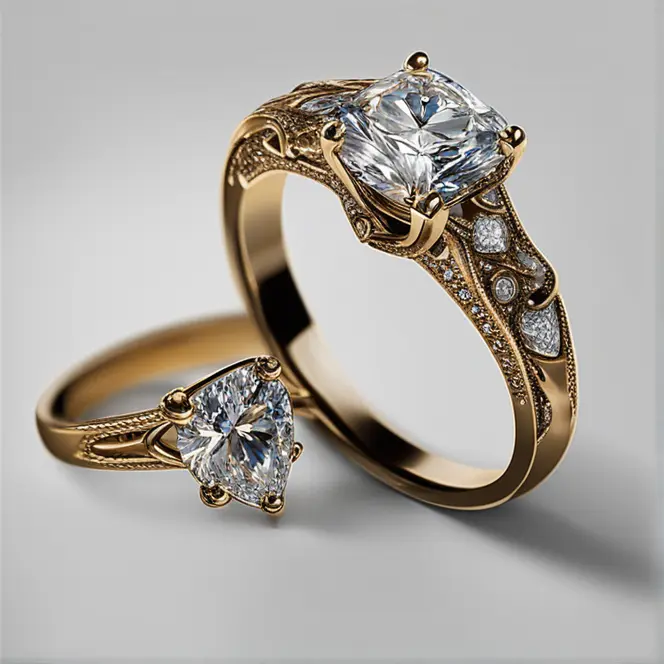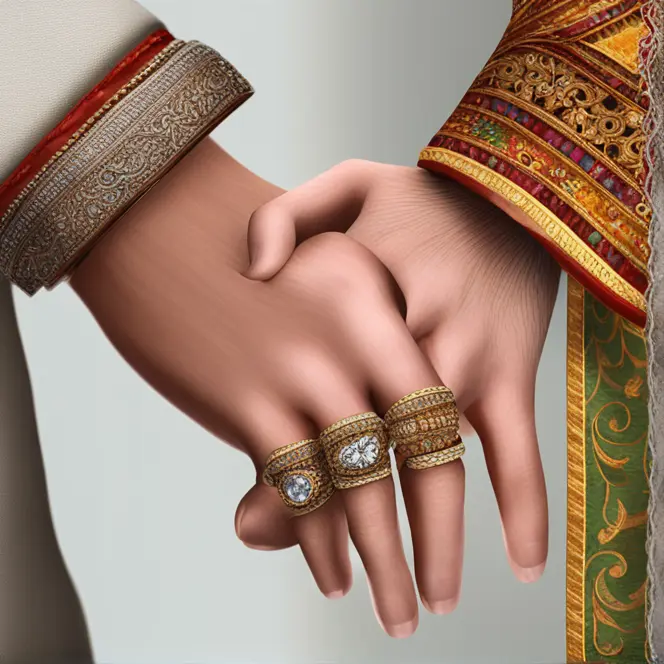
Engagement Ring Traditions: Hand & Finger Choice
Decipher the customs behind selecting the correct hand and finger for an engagement ring, influenced by traditions and modern styles.
article by Nora Pennington
Throughout history, the ring finger has been bestowed with great significance, especially when it comes to matrimony. Ancient Romans coined the term "vena amoris," believing that a vein ran directly from the fourth finger on the left hand to the heart, solidifying its choice for the placement of the engagement ring. This symbolic link between the ring and the heart underscored the commitment and passion inherent in betrothal. Furthermore, Christians during medieval times would seal their nuptials by placing the ring on the left hand as the priest recited, "In the name of the Father, the Son, and the Holy Spirit," touching the thumb and the next two fingers sequentially before ending on what we now refer to as the ring finger.

Globally, engagement ring customs present a colorful tapestry of cultural practices. While Western societies typically embrace the left hand for engagement and wedding rings, many Eastern and some European countries, such as Russia, Greece, and Spain, wear their rings on the right hand. This preference is often rooted in cultural heritage and religious traditions. Furthermore, in some regions, the engagement ring eventually transfers to the opposite hand after the wedding ceremony, symbolizing the transition from engagement to marriage. These diverse customs reflect each society's unique perspective on love and alliance.

The tide is turning in contemporary society regarding ring placement. While traditional customs continue to thrive, personal preference and practicality often steer the decision. For example, individuals may opt for the non-dominant hand for comfort or to mitigate the risk of damage during daily activities. The surge in international marriages and the blending of cultures have also contributed to couples creating individualized traditions that honor their shared values. Such shifts underscore a growing focus on personal narratives over rigid customs.

Choosing the correct finger extends beyond tradition; aesthetics play a pivotal role. Different styles necessitate consideration of proportion and visual harmony. Slender bands and solitaire diamonds can grace any finger elegantly, while broader bands or ornate settings might suit larger fingers better. The ring finger, being typically smaller than others, can help amplify the presence of the ring. Furthermore, contemporary fashion often sees engagement rings paired with other jewelry – encouraging a selection process mindful of style and coherence, as well as the bearer's signature look.

While the allure of tradition tempts many, modern engagements often represent a fusion of personal taste and conventional wisdom. Partners today might choose a hand that represents their heritage or go entirely unique with finger selections. Some might opt for tattoo rings or forego rings entirely. What remains constant is the symbol of the ring: a pledge of commitment and love. In the end, rules fluctuate with time, but the essence of the betrothal symbol—be it worn on any hand or finger—continues to be recognized as a powerful testament to shared devotion.
For those about to take the step toward engagement, considering hand and finger choice is an integral part of the journey. Speak with your partner about your values, look into the practices within your cultures, and reflect on what feels right for you both. Whether you hew close to tradition or chart your own course, ensure that the engagement ring choices resonate with the promise you are making to each other. Remember, the hand and finger chosen are the canvas on which your love is symbolized; make it as unique as your relationship.
Published: 12/8/2023
Modified: 12/8/2023
More predictions
Come back here soon to learn more about yourself and your future


The Art Of Palm Reading: Hand Types
Uncover the secrets of hand types in palm reading to discover personality traits and life paths. Dive into the fascinating art of palmistry!


Tracing Life's Path: The Intricacies Of Palm Reading
Explore the fascinating world of palmistry and discover how the lines on your palm can reveal secrets about your life and future.


Exploring The Hidden Meanings In Palm Lines
Explore the fascinating world of palmistry by learning about the different hand types and what they signify for personality and destiny.